Music is a powerful force in our lives, and it can be especially enriching for children. Playing the piano not only provides musical enjoyment but also improves cognitive skills, coordination, and self-confidence. If you’re considering piano lessons for your child, this guide will provide you with all the information you need to make an informed decision.
In this guide, we’ll cover everything from finding the right teacher to choosing the best lesson format and setting realistic expectations. We’ll also provide answers to some of the most frequently asked questions about children’s piano lessons.
Target Audience
Parents seeking piano lessons for their children typically fall within a specific demographic and have shared interests. These parents prioritize their children’s musical education and are often willing to invest in quality lessons.
The age range of children enrolled in piano lessons varies, but the most common age to start is between 5 and 7 years old. At this age, children have developed sufficient fine motor skills and cognitive abilities to engage with the instrument effectively.
Musical Preferences
Children’s musical preferences vary widely, but popular genres among young piano students include classical, pop, and movie soundtracks. Classical music provides a strong foundation in musical theory and technique, while pop music often appeals to children’s current musical tastes. Movie soundtracks can be a great way to introduce children to different musical styles and genres.
Learning Goals
Parents typically have several learning goals in mind when enrolling their children in piano lessons. These goals may include developing a lifelong appreciation for music, improving fine motor skills, enhancing cognitive abilities, and fostering self-discipline and perseverance.
Lesson Structure
Children’s piano lessons typically follow a structured format to optimize learning and engagement. Each lesson is designed to build upon the previous one, fostering gradual progress and skill development.
The lesson structure typically comprises three main components: warm-ups, exercises, and repertoire. Warm-ups prepare the fingers and mind for playing, while exercises focus on developing specific technical skills. Repertoire involves learning and performing musical pieces that showcase the child’s developing abilities.
Balance between Theory and Practical Application
In children’s piano lessons, there is a careful balance between theoretical knowledge and practical application. Theoretical concepts, such as music notation, rhythm, and scales, are introduced gradually alongside practical playing exercises. This approach ensures that children develop a solid understanding of the fundamentals while also enjoying the practical aspects of playing the piano.
Teaching Methods
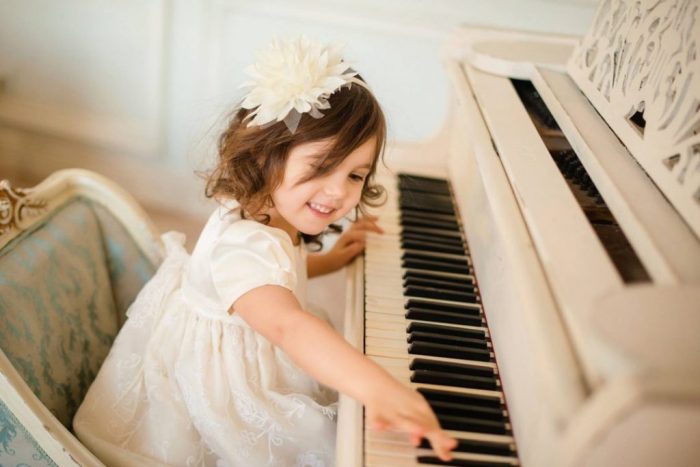
Children’s piano lessons come with various teaching methods, each catering to different learning styles and preferences. Among the popular approaches are the Suzuki, Yamaha, and traditional methods. Here’s a breakdown of their key features, pros, and cons:
Suzuki Method
The Suzuki method emphasizes early childhood music education, starting from as young as three years old. It involves extensive parental involvement, with parents attending lessons and practicing with their children at home. The method focuses on developing listening skills, ear training, and a strong foundation in music theory.
- Pros: Encourages early musical development, develops strong listening and ear training skills, fosters a positive learning environment with parental involvement.
- Cons: Requires significant parental commitment, may not be suitable for all learning styles, can be more expensive due to the involvement of parents.
Yamaha Method
The Yamaha method is a structured and progressive approach that introduces music theory and notation alongside practical piano playing. It uses colorful materials and engaging activities to make learning fun and interactive. The method is designed to develop a well-rounded understanding of music.
- Pros: Provides a comprehensive approach to music education, engaging and interactive lessons, suitable for various learning styles.
- Cons: May be less focused on developing advanced technical skills, can be more structured and less flexible than other methods.
Traditional Method
The traditional method typically involves one-on-one lessons with a piano teacher. The focus is on developing technical skills, reading music, and understanding music theory. This method allows for a more individualized approach, catering to the student’s specific needs and interests.
- Pros: Highly individualized approach, allows for a deep dive into technical skills and music theory, provides a strong foundation for advanced piano playing.
- Cons: May not be as engaging for younger students, can be more challenging for students with limited attention spans, requires a high level of discipline and motivation.
Teacher Qualifications
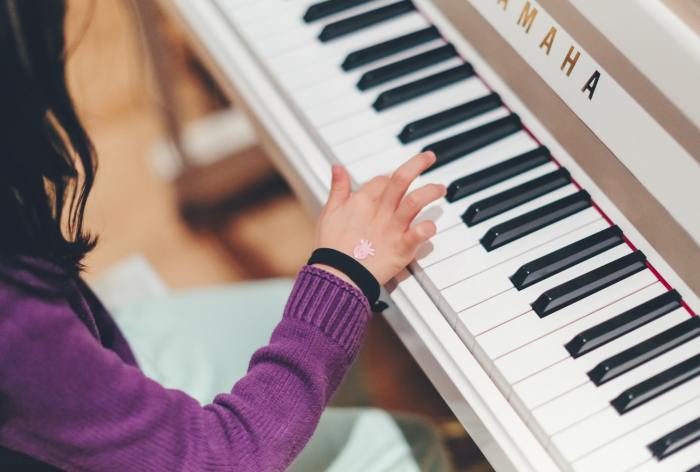
Piano teachers working with children should possess the necessary qualifications and experience to effectively teach and inspire young learners. They should have a deep understanding of music theory, piano techniques, and child development.
Certifications and Training
Certifications, such as those from the Music Teachers National Association (MTNA), demonstrate a teacher’s commitment to professional development and adherence to industry standards. Additionally, ongoing training workshops and seminars keep teachers up-to-date on the latest teaching methods and advancements in music education.
Teaching Philosophy
A teacher’s teaching philosophy should align with the specific needs of young learners. They should be patient, encouraging, and adaptable, fostering a positive and supportive learning environment. A child-centered approach, where the student’s interests and learning style are taken into account, is essential for engaging and motivating children.
Lesson Location
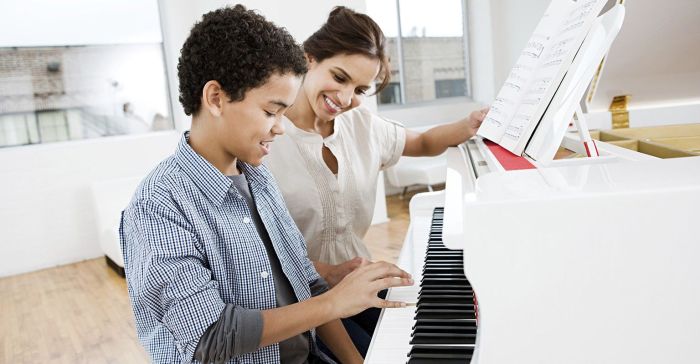
Choosing the right location for your child’s piano lessons is crucial. Each option offers unique advantages and drawbacks that should be carefully considered.
The three main lesson location options are in-home lessons, music studios, and community centers.
In-Home Lessons
- Convenience: Lessons are held in the comfort of your own home, eliminating travel time and potential scheduling conflicts.
- Privacy: Your child can learn in a private and familiar environment, free from distractions.
- Limited accessibility: Not all piano teachers offer in-home lessons.
Music Studios
- Professional atmosphere: Studios provide a dedicated and well-equipped space specifically designed for music lessons.
- Wide range of teachers: Studios typically employ a variety of teachers with different styles and specialties.
- May require travel: Lessons may be held at a location that is not as convenient as in-home lessons.
Community Centers
- Affordable: Community centers often offer piano lessons at a lower cost than private studios.
- Socialization: Lessons may be held in group settings, providing opportunities for children to interact with peers.
- Limited availability: Class times and teacher availability may be more limited.
Lesson Frequency
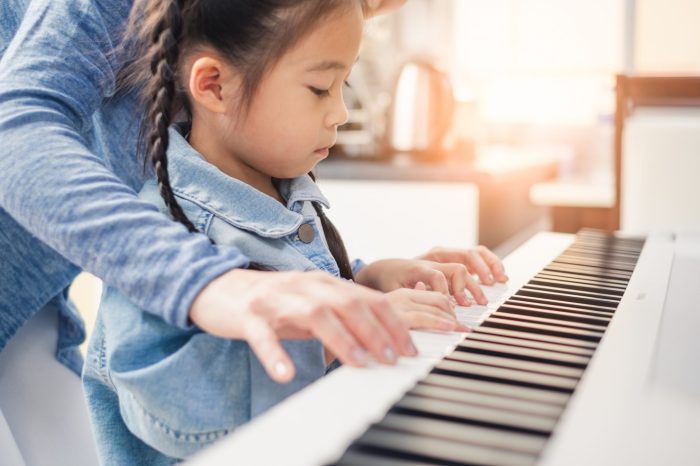
Establishing an optimal lesson frequency for piano lessons is crucial for children’s progress and engagement. Various factors influence the ideal frequency, including their age, skill level, and time constraints.
Regular practice and consistent lessons are vital for developing proficiency in piano playing. Children who practice regularly tend to grasp concepts more quickly, improve their dexterity, and develop a stronger musical foundation.
Age and Skill Level
- Young beginners (ages 5-7): Weekly lessons are recommended to establish a solid foundation and foster interest.
- Intermediate students (ages 8-12): Two lessons per week provide ample time for skill development and repertoire exploration.
- Advanced students (ages 13+): Lessons can range from weekly to bi-weekly, depending on the student’s dedication and performance goals.
Time Constraints
Time constraints can impact lesson frequency. If a child has limited availability, consider the following options:
- Monthly lessons: Can provide a basic introduction to the instrument and sustain interest.
- Alternate weeks: Lessons every other week offer a balance between progress and flexibility.
Ultimately, the best lesson frequency is one that allows the child to progress at a comfortable pace while maintaining consistency and enthusiasm.
Lesson Duration
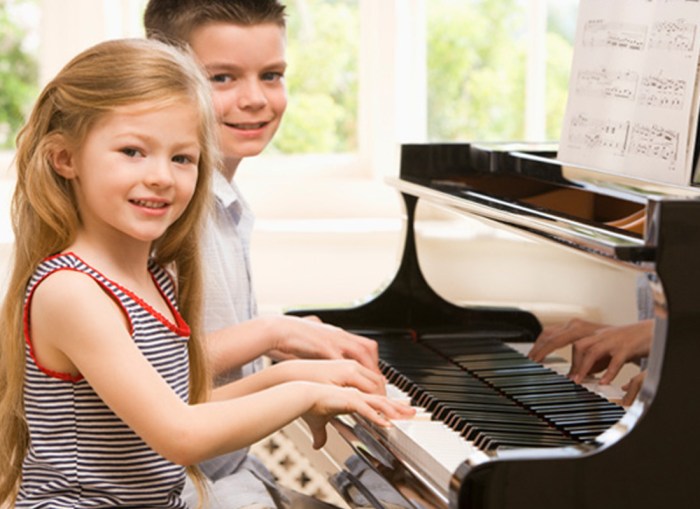
The optimal duration of a children’s piano lesson varies based on their attention span and learning capacity. Young children typically have shorter attention spans, so lessons for them should be kept relatively brief.
As children get older and their attention spans increase, the duration of their lessons can be gradually extended. However, it’s important to avoid overwhelming children with too much information in one sitting.
Age-Appropriate Lesson Durations
- Preschoolers (3-5 years old): 15-20 minutes
- Kindergarteners (5-6 years old): 20-25 minutes
- Elementary school students (6-10 years old): 30-45 minutes
- Middle school students (11-13 years old): 45-60 minutes
- High school students (14-18 years old): 60 minutes or more
Student Assessment
Assessing student progress is crucial for effective teaching. It helps identify areas for improvement, set realistic goals, and provide constructive feedback.
Informal Observations
Informal observations involve observing students during lessons, noticing their progress, and providing immediate feedback. This allows for ongoing assessment and adjustment of teaching methods.
Formal Evaluations
Formal evaluations are scheduled assessments, such as written tests, performance assessments, or projects. They provide a more structured and comprehensive measure of student progress and can be used to track improvement over time.
Performance Opportunities
Performance opportunities, such as recitals or competitions, allow students to demonstrate their skills in a real-world setting. They provide valuable feedback and help students develop confidence and stage presence.
Constructive Feedback
Constructive feedback is essential for student growth. It should be specific, actionable, and delivered in a positive and encouraging manner. Feedback should focus on both strengths and areas for improvement.
Setting Realistic Goals
Setting realistic goals is crucial to motivate students and prevent discouragement. Goals should be challenging but achievable, and should be adjusted as students progress.
Lesson Fees
The cost of children’s piano lessons varies widely depending on several factors, including the teacher’s experience, location, and lesson duration.
In general, piano lessons can range from $20 to $60 per hour, with the average cost being around $35 per hour. However, in major cities or areas with a high cost of living, lessons can cost up to $100 per hour or more.
Factors Influencing Pricing
- Teacher Experience: More experienced teachers typically charge higher rates for their lessons.
- Location: Lessons in urban areas tend to be more expensive than lessons in rural areas.
- Lesson Duration: Longer lessons typically cost more than shorter lessons.
- Group vs. Private Lessons: Group lessons are typically less expensive than private lessons.
- Online vs. In-Person Lessons: Online lessons are often less expensive than in-person lessons.
Marketing and Outreach

To effectively promote children’s piano lessons, it’s crucial to implement a comprehensive marketing strategy that encompasses various channels and techniques. Online advertising, social media engagement, community partnerships, and word-of-mouth marketing can collectively generate leads and foster brand awareness.
Online Advertising
Harness the power of search engine optimization () to ensure your website ranks prominently in search results when potential clients seek piano lessons. Utilize pay-per-click (PPC) campaigns to target specific s and display ads to interested individuals. Consider social media advertising to reach parents and children on platforms like Facebook, Instagram, and YouTube.
Social Media
Establish a strong social media presence on platforms frequented by your target audience. Share valuable content such as piano tips, lesson updates, and student success stories. Engage with followers by responding to comments and questions promptly. Run social media contests or giveaways to generate excitement and expand your reach.
Community Partnerships
Forge partnerships with local schools, music stores, and community centers to promote your lessons. Offer introductory workshops or demonstrations to showcase your teaching style and connect with potential students. Distribute flyers and brochures at community events and collaborate with other businesses that cater to families.
Word-of-Mouth Marketing
Encourage satisfied students and parents to spread the word about your lessons through positive reviews and testimonials. Offer referral incentives to students who introduce new clients to your program. Encourage students to perform at local events or recitals, which can generate interest and attract potential students.
Final Conclusion

We hope this guide has given you a comprehensive overview of children’s piano lessons. If you have any further questions, please don’t hesitate to contact us. We’re here to help you give your child the gift of music.
Questions and Answers
What are the benefits of piano lessons for children?
Piano lessons can provide a wide range of benefits for children, including improved cognitive skills, coordination, and self-confidence. Music education has also been shown to improve academic performance and social skills.
What is the best age to start piano lessons?
The best age to start piano lessons is typically between the ages of 6 and 8. However, some children may be ready to start earlier or later, depending on their individual development.
How often should children have piano lessons?
The optimal frequency of piano lessons for children is once per week. This will allow them to make consistent progress and retain what they learn.
How long should piano lessons be?
The ideal length of piano lessons for children is 30 minutes. This is long enough to cover all the essential elements of a lesson, such as warm-ups, exercises, and repertoire, without overwhelming the child.
How much do piano lessons cost?
The cost of piano lessons can vary depending on the teacher’s experience, location, and lesson duration. However, you can expect to pay between $20 and $60 per lesson.